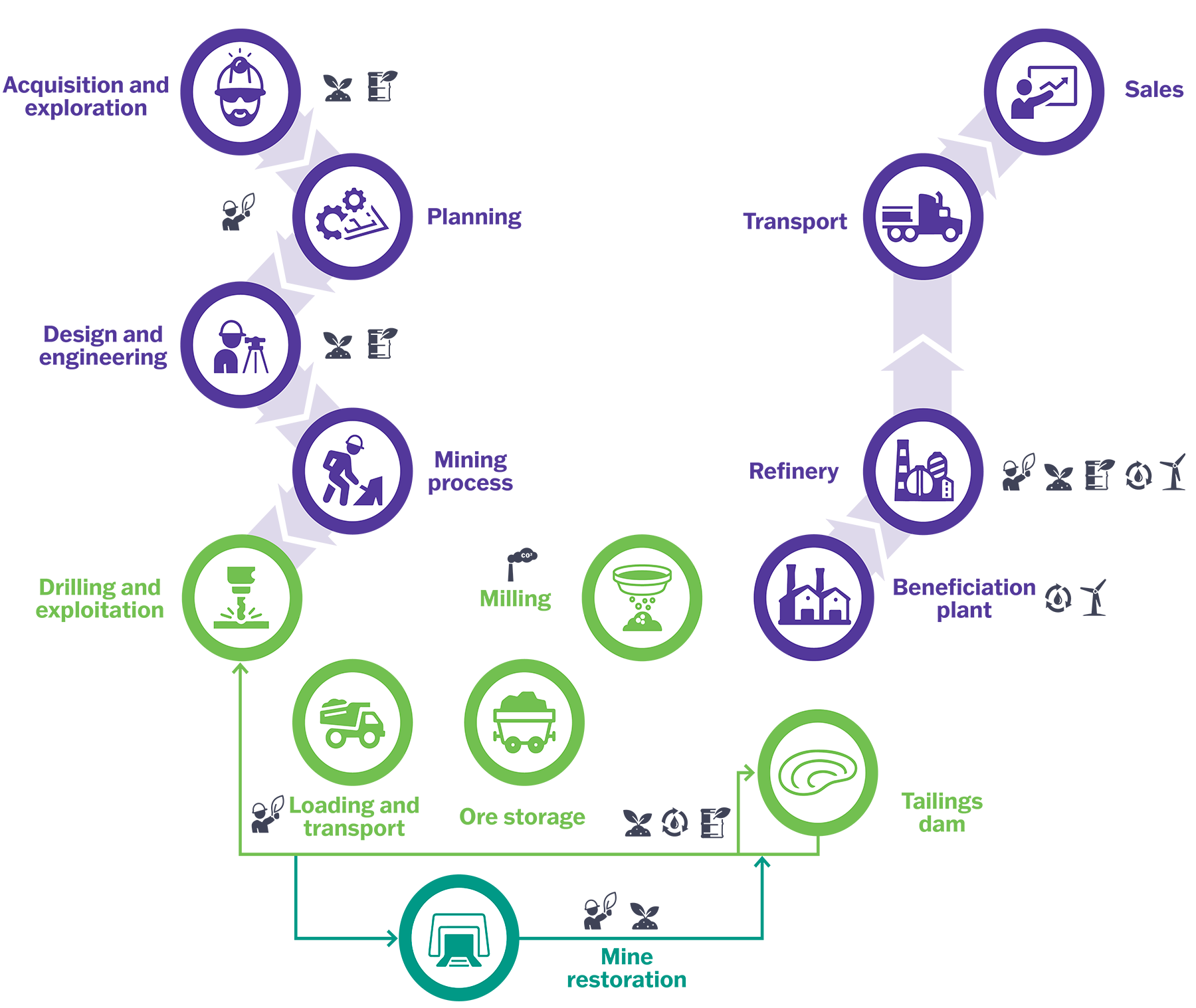

304-1, 304-2
All Peñoles operating units are located outside protected natural areas or areas of great value for biodiversity, so there is no impact on flora and fauna included in any special protection category.
Before we begin any new project or expand existing facilities, pursuant to Mexican regulations, we conduct an environmental impact assessment to determine the potential effects as well as measures to mitigate and/or offset them, in order to obtain the respective permit from the environmental authorities. This assessment includes all phases of the project, from construction and operation through closure. This process is intended to avoid negative environmental impacts.
Additionally, we operate two wildlife management facilities where species are managed intensively: one at Minera Roble (Velardeña unit) for animals, and one at Metalúrgica Met-Mex Peñoles for plants. At the latter we are helping to conserve an endemic species in danger of extinction, the Noa agave, which we reproduce in our nursery and plant in its natural environment.
Mining projects
G4-MM1, G4-MM2, EM-MM-160a.1
Before occupying the site of any mining project or expansion of an operating unit, we carry out rescue and relocation activities to preserve wildlife and local fauna included in any NOM-059-SEMARNAT-2010 protection category. We have techniques and procedures to drive away, capture and release wildlife into natural woodlands; plant species are extracted from the project area and relocated to nearby areas, ensuring their conservation. In addition , we carry out soil conservation and water infiltration works (arranging the material following the curve of the land), and nursery-grown trees and plants are planted to compensate erosion.
Because of its unique design characteristics, every new project requires selective occupation of sites with vegetation, where environmental benefits are realized, such as soil and moisture retention, fauna for habitat and climate regulation.
As a mitigation measure, we carried out a number of conservation activities to increase soil retention. We opened individual terraces to incorporate plants rescued from construction sites and to serve as a nursery, we laid down rolls of sawdust, and placed stone following the natural curve of the land and filtering dams.
4,947
trees and bushes were planted in adjoining areas and within our facilities.

Flock at the La Noria Recreational Center, Sabinas unit
Current operations
EM-MM-160a.1
We carry out reforestation actions both in operating units and in neighboring communities. In 2020 we donated 38,598 individuals, including trees, bushes and various plants to the communities, and 4,947 were planted in adjoining areas and within our facilities. All of the individuals were native to the regions where we operate.
Progressive restoration and closure of mining operations
103-1, 103-2, 103-3, G4-MM10,EM-MM-160a.1
The closure of operations is an integral phase in the lifecycle of a mine, so planning it must be incorporated into every phase of its productive existence. In keeping with our guidelines, our philosophy and sustainability policy, during the various phases of operation, planning work is done for restoration and progressive rehabilitation, in order to ensure the functional regeneration of biodiversity in areas that are no longer subject to mining operations.
The purpose of a closure program is to return, to the extent possible, all areas affected by mining operations to physically and chemically stable and safe conditions, according to local uses and customs of the land and its geographic characteristics. With this we guarantee that our operations affect neither the environment nor neighboring communities.
Because closure plans are dynamic processes, they are updated each year, in order to ensure we have a reserve of funds to execute them at the time they are needed.
In 2020, we updated the amounts of the ecological preserve and prepared a conceptual plan for the closure of the operating unit that started up recently (Capela). With this, we now have conceptual plans for the closure of all of Peñoles’ mining units.
In the closed units at Cuale, Sultepec, Monte and Minita, maintenance activities and securing of facilities were carried out, along with maintenance of areas that had been planted with trees in previous years. With this we were able to guarantee the development and survival of vegetation and help support phases of environmental succession that will develop habitats at sites formerly occupied by mining activity. As habitats are generated, fauna can gradually return to nature in these areas.
Soil treatment and improvement activities were carried out in lands occupied by mining activity, in order to plant trees in subsequent phases. We also performed maintenance to ensure appropriate operation of rainwater runoff.
At the Bismark unit, we began activities to schedule the closure, which include organization and cleanup, equipment recovery and dismantling infrastructure; the next phases will include characterization, remediation, and reforestation of these areas.
38,598
individuals, including trees, bushes and various plants were donated to the communities.
MINING-METALLURGY PROCESS
Acquisition and
exploration



Planning


Design and
engineering


Mining
process


Drilling and
exploitation


Loading and
transport


Ore storage


Milling


Beneficiation
plant


Tailings
dam


Refinery


Transport


Sales



Mine
restoration


Reforestation, tree planting and/or donation
Environmental and safety heads (MAS)
Emission control
Waste recycling and/or reuse
Clean energy
Wastewater recirculation and/or treatment